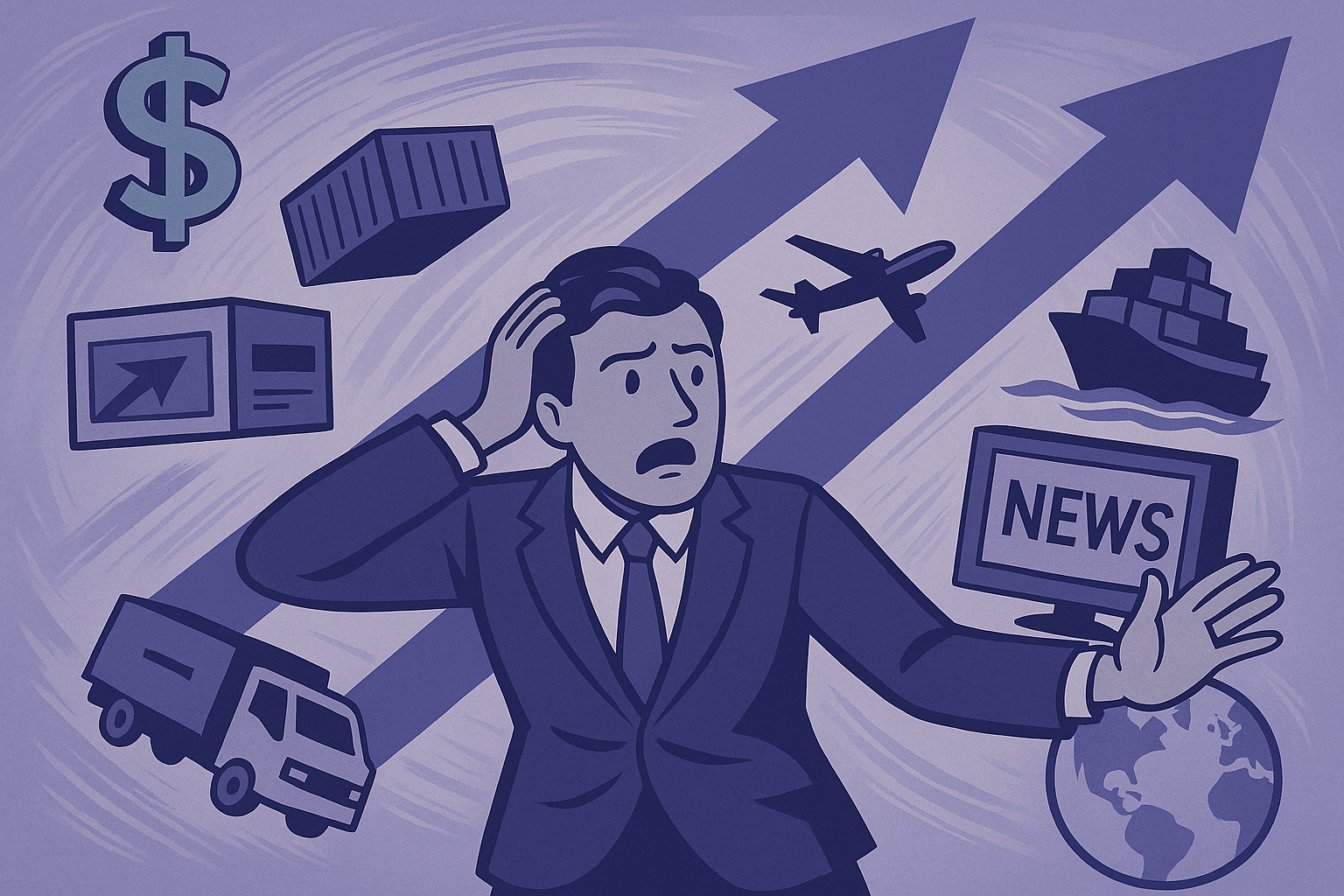It’s been a whirlwind few months in supply chain & logistics, and I’m not just talking about the back-to-back Manifest and ShopTalk conferences in Vegas. The avalanche of everyday tariff-related news that’s shaking up the entire supply chain ecosystem has been a wild ride, and after 15+ years in this space, I can confidently say I’ve never seen anything like it.
The only word that feels right to describe the current climate and news cycle: whiplash. Supply chain and logistics news is THE story—every day, everywhere.
If you’re like me, you’re probably watching the media scramble to understand the implications of these changes. All of my respect to the journalists trying to cover it all and still get it right, even as things change on a dime! The ripple effects of uncertainty in the supply chain are being felt across every corner of the globe. What does it mean for companies, employees and consumers? How are businesses adjusting or changing course? How will this impact the availability and pricing of the goods we rely on? Will anyone benefit from what’s to come? These are the questions reporters are wrestling with, and they need the right sources to answer them.
And guess what? We’re not even halfway through 2025. Hot-button topics like tariffs, AI and tech innovation, labor shortages and other factors will continue to dominate the conversation in the news AND at major events this month like Gartner’s Supply Chain Symposium and Home Delivery World—both of which will have strong media contingents. With those events fast approaching, now’s the time to take stock of your own company’s story and ask: are you ready to help reporters make sense of what’s happening?
Here are a few key considerations as you plan your next move with the press:
Your Data May Contain The Story
Proprietary data is powerful—especially right now. If your data indicates shifts in customer behavior, unique needs or evolving usage patterns, it’s time to put that information to good use and tell the story of what’s changing. For example, if your data shows demand shifting in a certain area of your business, share it with reporters to provide context and explain why these changes matter.
Indicators in Customer & Prospect Behavior
New customer inquiries, whether from new sectors or regions, can often be linked to the ripple effect of tariffs. This is where you can add real value to reporters. By explaining how these requests are influencing what companies need, you’re offering direct insight into the market. If you’re getting feedback from customers about their biggest concerns right now, that’s even more gold for reporters. But always remember: unless you have explicit permission to name drop clients with the press, it’s fine to offer masked insights as a starting point.
Don’t Be Afraid To Get Niche
It’s easy to get distracted by the first wave of breaking news, but the second wave of media coverage can often be your best opportunity to break through. These follow-on stories dive deeper into specific or niche segments of the market directly impacted by the news. If you’ve got good niche anecdotes or operate in a specialized part of the market, now is the time to share your insights. By zooming in on specific examples like eggs, tires, fireworks, or toys (just a few of the topics in the news lately), you can add nuance and real value to the conversation. These stories highlight how broader trends are affecting particular industries and give reporters the unique details they need to illustrate those impacts.
AI Is No Longer The Holy Grail
Let’s talk about AI. AI is no longer the shiny new thing that will automatically get you media attention. These days, smart companies are showing how their AI-powered tech is solving persistent problems in the supply chain and logistics sector. It’s about what the customer is doing and getting out of it, and how those stories help reporters connect the dots between innovation and impact. Unless your AI technology is groundbreaking in a major way, relying solely on AI as a headline feature likely won’t strike a chord with the press. Now’s the time to show—not just tell.
Humanize The Sector
It’s not just about the goods moving around the world; it’s about the people who show up everyday and make it happen. Now, more than ever, it’s crucial to spotlight their experiences, challenges, and personal wellness as industry changes take hold. These human elements are critical parts of the story that need more attention. As the industry faces increasing pressure, shedding light on the people powering it will keep the conversation grounded and relatable. If your company has first-hand insights to share, now is the time to put them in front of the press.
At the end of the day, our team is helping our supply chain & logistics clients navigate this complex landscape and frenzied news cycle with grace and great results. If you’re still wondering how to make your story relevant and timely, I’m here to help. Feel free to reach out if you’d like to brainstorm or meet up at Home Delivery World in a few weeks. I’m at bbevacqua@gregoryfca.com. Stay strong out there!
